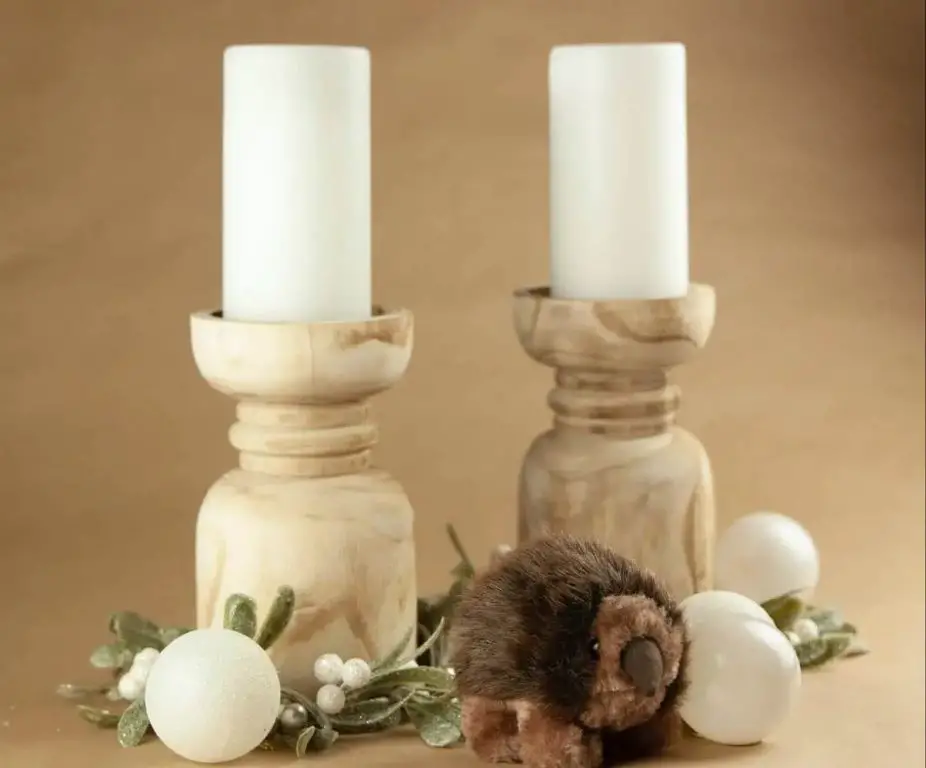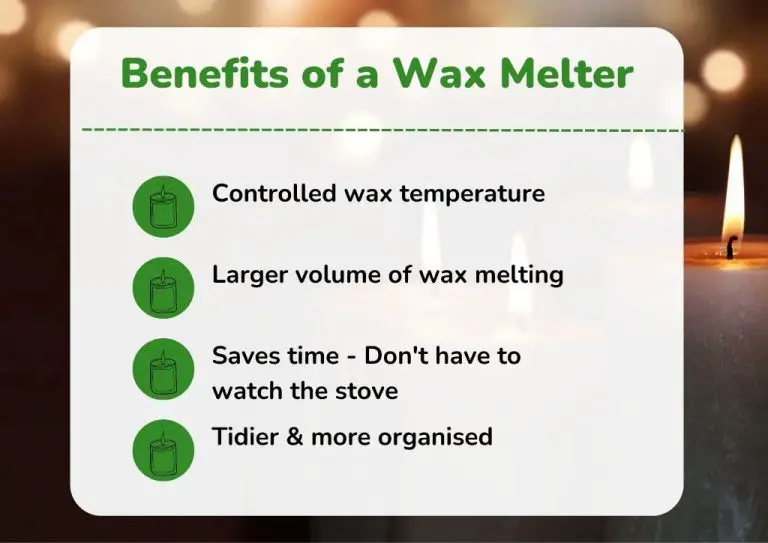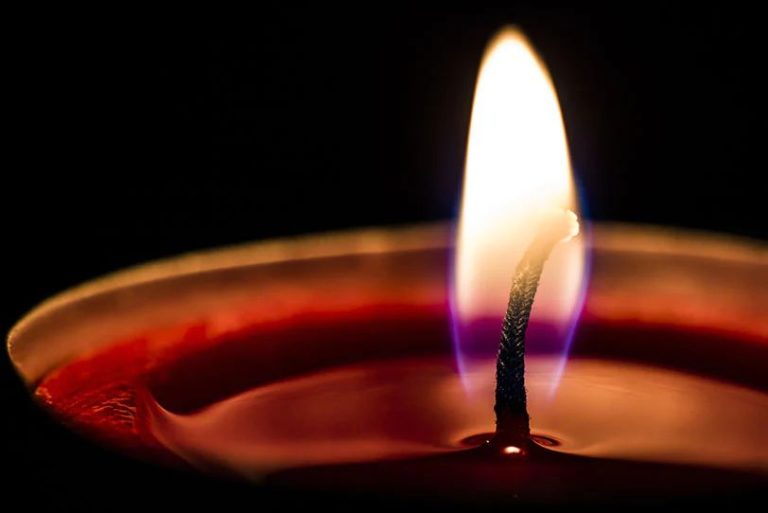What Do You Call The Glass Around A Candle?
A candle holder, also known as a hurricane lamp or hurricane vase, is a glass container used to hold a candle. The purpose of a candle holder is both decorative and functional. It contains the candle, protecting the surrounding area from melting wax or the flame, while also amplifying and directing the light. Candle holders allow candles to be used safely and enable more artistic display.
The earliest candle holders were simple functional pieces, but over time they became increasing decorative and elaborate. Glass became a popular material for candle holders during the Renaissance era as glass making techniques advanced. Intricate hand-blown glass candle holders emerged across Europe. Today candle holders come in a huge range of shapes, sizes and styles to suit any décor.
Common Names
There are many common names for the glass or other material that encloses a candle, depending on the shape, design, and regional terminology. Some of the most common names include:
- Hurricane – A hurricane candle holder is a tall, cylindrical glass shade that encloses pillar candles or tapers. The open bottom allows oxygen to feed the flame while the glass protects the flame from drafts.
- Luminary – Luminaries are simple glass cylinders or bags that protect a candle flame. They are often used for outdoor decoration.
- Candle lamp – A candle lamp consists of a fuel chamber, enclosed to protect the flame, and a glass chimney. Oil and wax are commonly used fuels.
- Candle sleeve – A candle sleeve is a straight-sided, open-ended glass tube that protects taper candles.
- Glass votive – Small glass containers meant for tealight or votive candles are referred to as glass votives or votive holders.
- Regionally, hurricane shades may also be called chimneys and indoor glass votive holders are known as votive cups or tealight cups.
The many styles of decorative glass candle containers protect the flame while allowing the candlelight to shine through beautifully.
Materials
Candle holders come in a variety of materials, each with their own pros and cons. Some of the most common materials used are glass, metal, and ceramic.
Glass candle holders are an elegant and beautiful choice. They allow the candlelight to shine through clearly and come in many decorative styles, like colored, etched, or cut glass. However, glass can break easily if knocked over. Glass also retains heat, so it can get hot to the touch (What a Host).
Metal candle holders are very durable and long-lasting. They come in options like iron, brass, and copper. Metal conducts heat well to provide even burning. However, some metals like iron can rust if not cared for. Metals can also get very hot near the flame (Wayfair).
Ceramic candle holders have a classic, vintage look. They come in a range of colors and decorative patterns. Ceramic disperses heat fairly evenly. However, it can chip or crack if dropped. Unglazed ceramic may absorb fragrances and stain over time.
Shapes and Sizes
Candle holders come in a variety of shapes and sizes to accommodate different types of candles. Some of the most common shapes include:
- Votive – Small, short holders meant for votive or tealight candles. Votive holders often have a cup shape and are around 1-3 inches in diameter.
- Taper – Tall, thin holders designed for taper candles which are long and skinny. Taper holders often have a cylindrical shape.
- Pillar – Wide holders made for pillar candles which have a thick diameter. Pillar holders come in varying widths from 2 inches up to 5 inches wide.
- Floating – Floating candle holders allow candles to rest on water inside a bowl or vase, creating a floating effect.
- Lantern – Lantern shapes enclose the candle with glass panels and are used for outdoor lighting.
Candle heights range from just an inch or two for votives and tealights, up to 3-4 inches for tapers, and anywhere from 3-18 inches for pillars. Diameters also vary from 0.5 inches for tapers to 1-5 inches for pillars.

Decorative Styles
Candle holders come in a wide variety of decorative styles that can complement any décor. Some of the most popular decorative techniques include:
Colored – Candle holders may be made from colored glass or other materials like ceramic, metal, or stone. Popular colors include jewel tones like emerald green, sapphire blue, and ruby red. Metallic finishes in gold, silver, copper, and bronze are also common.
Etched – Etching creates decorative patterns and designs by cutting into the surface of glass or metal. Etched designs may include flowers, abstract shapes, or geometric patterns.
Painted – Candle holders may feature hand-painted floral motifs, scenes, or other artistic designs. These add a vibrant, custom-made look.
Faceted – Faceting refers to cutting the glass into angled planes to refract light. This technique creates a sparkling, jewel-like effect.
In addition to these decorative techniques, candle holders come in many different styles like Bohemian (colorful, ornate), Modern (clean lines, geometric shapes), and Rustic (natural materials, distressed). The options are endless for personalizing any space.
Source: https://snkent.com/10-types-of-candle-holders-to-enhance-any-interior-or-exterior-space/
Safety
When burning candles, it’s important to follow some basic safety tips to prevent fires and injuries. According to the National Candle Association [1], you should trim wicks to 1⁄4 inch before lighting to prevent high flames and sooting. Wicks should be trimmed every few hours as they burn down. It’s also critical to place candles in proper holders made of non-flammable materials like glass, metal or ceramic. Avoid plastic holders which can melt from the flame. Keep candles away from drafts, vents and air currents that can cause rapid, uneven burning. Always burn candles in a well-ventilated room and never leave burning candles unattended. Extinguish candles before going to sleep and never burn a candle all the way down to avoid breaking the holder and causing spills of hot wax. Follow these tips to safely enjoy candlelight.
Candle Holder Uses
Candle holders serve a variety of uses beyond just holding a candle upright. Some common uses for candle holders include:
Centerpieces – Candle holders make for beautiful centerpieces at events like weddings, birthday parties, anniversary parties, and holiday gatherings. Clustering several coordinating candle holders together with floral arrangements and other decor creates a stunning focal point for any table.
Illumination – Candle holders allow candles to provide mood lighting and ambiance. The soft, flickering glow creates warmth and atmosphere for dinners, romantic evenings, spa spaces, and more. Positioning candle holders at different heights adds dimension.
Religious Ceremonies – Candle holders are used in many religious ceremonies and rituals. Churches use candelabras, votive candle holders, and other styles during services. Individual candle holders may be used on home altars and shrines.
Events – Candlelit events rely heavily on candle holders. Everything from fundraising galas to small dinner parties use groupings of glass hurricane candle holders and various styles to set the scene.
Gifts – Ornate and decorative candle holders make excellent gifts for any occasion. They’re versatile, affordable, and bring joy whenever lit.
Care and Maintenance
Proper care and maintenance is important for preserving candle holders and ensuring they last a long time. Cleaning dust and built up wax are some of the most common maintenance tasks.
To clean dust, use a soft cloth or duster to gently wipe down the holder. Avoid using harsh chemicals or abrasive materials that could scratch or damage the holder. For glass holders, a vinegar-water solution can help cut through dust and debris.
Removing old wax can be tricky but is crucial for reusing holders. Start by freezing the holder overnight, as this helps harden the wax so it chips off easier. Use a plastic knife or spatula to gently pry and pick wax pieces out of the holder. For nooks and crevices, try using a toothpick. Avoid sharp metal tools that could scratch the glass. Once the excess wax is removed, clean any wax residue with hot water and dish soap, wiping thoroughly with a soft cloth. Refer to this DIY guide for tips.
Properly storing candle holders keeps them free of dust and damage. Wrap holders in tissue paper and store in a dry, temperature-controlled area away from direct sunlight. Group similar-sized holders together to prevent scratching. For vintage or decorative holders, consider displaying them alongside candles or other decor when not in use.
Repairing broken candle holders often involves super glue and patience. Carefully glue any broken pieces back together, using a clamp if needed to hold in place until dry. Touch up paint chipped areas with hobby paint. Severely damaged holders may need professional repair or restoration beyond basic maintenance at home.
Notable Examples
Some of the most famous and valuable antique candle holders come from renowned brands like Tiffany, Waterford Crystal, and Lalique.
Classic Tiffany Studios candlesticks from the early 1900s can sell for thousands of dollars at auction. These art glass holders often feature colorful iridescent glazes and intricate patterns. According to LoveToKnow Antiques, Tiffany candle holders in good condition can be worth $2,000 to $4,000 each.
Waterford crystal candlesticks from Ireland are also prized by collectors. Mid-20th century examples with deep cutting and etching can command high prices. Rare early Waterford candleholders can sell for over $1,000.
French artist Rene Lalique was renowned for his art nouveau glassworks. His opalescent candle holders and lamps with insect and botanical motifs are highly desired by museums and private collectors. Lalique holders can sell for upwards of $5,000 at auction.
These iconic brands produced exceptional quality and innovative designs that make their antique and vintage candle holders valuable collectibles today.
Conclusion
In summary, the glass enclosure around a candle has many common names, including a hurricane, luminary, and candle lantern. While typically made of glass, these candle holders can also be crafted from other clear materials like acrylic or plastic. They come in a myriad of shapes, sizes, and decorative styles to suit different needs. Using a candle holder provides safety benefits, enhances ambiance, and allows for creative candle displays. With proper care and maintenance, a beautiful candle holder can last for many years. Though often seen as humble household objects, some antique and artisan-made versions are valuable collector’s items. Whatever you choose to call it, a candle holder’s glass enclosure helps bring out the light within.






